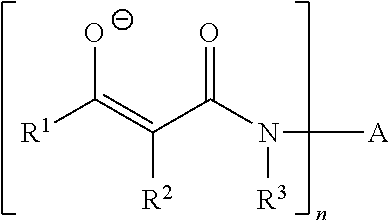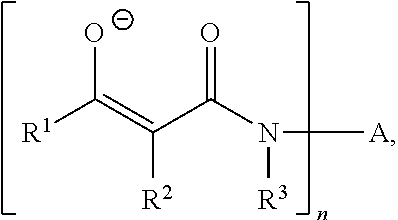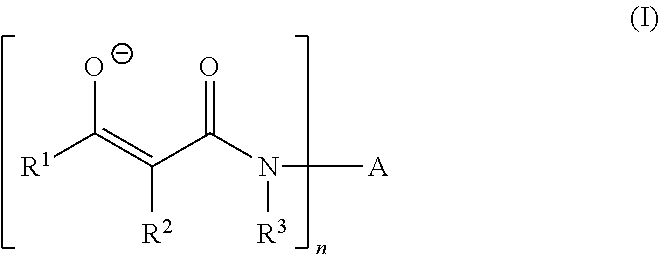Curable composition based on polymers containing silane groups and on a zinc catalyst
a zinc catalyst and polymer technology, applied in the field of curable compositions based on polymers containing silane groups and zinc catalysts, can solve the problems of a large hazard to water, a potential hazard to users and the environment, and a large hazard to health and the environment, and achieve the effects of improving occupational safety, low hazard classification, and high environmental protection
- Summary
- Abstract
- Description
- Claims
- Application Information
AI Technical Summary
Benefits of technology
Problems solved by technology
Method used
Image
Examples
examples 13 to 15
[0188]In a planetary mixer, 70.8 parts by weight of polyether STP-1 containing alkoxysilane groups, 27.5 parts by weight of ground chalk (Omyacarb® 5 GU), 0.3 part by weight of vinyltrimethoxysilane (VTMO), 1.4 parts by weight of 3-aminopropyltrimethoxysilane (AMMO) and catalysts 2, 3 and 4 as prepared above were blended according to table 4 below and the mixture was tested for skinning time (ST) under standard climatic conditions. In addition, the mixture was used to produce a film of thickness 2 mm which was left to cure under standard climatic conditions for 7 days and tested for mechanical properties.
[0189]
TABLE 4ModulusModulusofofTensileElon-elasticityelasticitystrengthgation0-5%0-100%Ex.CatalystConc.1)ST(MPa)at break(MPa)(MPa)13Catalyst 20.2737′1.6160%1.80.9DBU0.2014Catalyst 30.2754′1.5160%1.80.9DBU0.2015Catalyst 40.2760′1.6170%1.80.9DBU0.201)mmol of metal atoms or amidine groups or phosphazene groups per 100 g of polyether STP-1 containing alkoxysilane groups
[0190]The composi...
PUM
| Property | Measurement | Unit |
|---|---|---|
| temperature | aaaaa | aaaaa |
| temperature | aaaaa | aaaaa |
| temperature | aaaaa | aaaaa |
Abstract
Description
Claims
Application Information
 Login to View More
Login to View More - R&D
- Intellectual Property
- Life Sciences
- Materials
- Tech Scout
- Unparalleled Data Quality
- Higher Quality Content
- 60% Fewer Hallucinations
Browse by: Latest US Patents, China's latest patents, Technical Efficacy Thesaurus, Application Domain, Technology Topic, Popular Technical Reports.
© 2025 PatSnap. All rights reserved.Legal|Privacy policy|Modern Slavery Act Transparency Statement|Sitemap|About US| Contact US: help@patsnap.com



